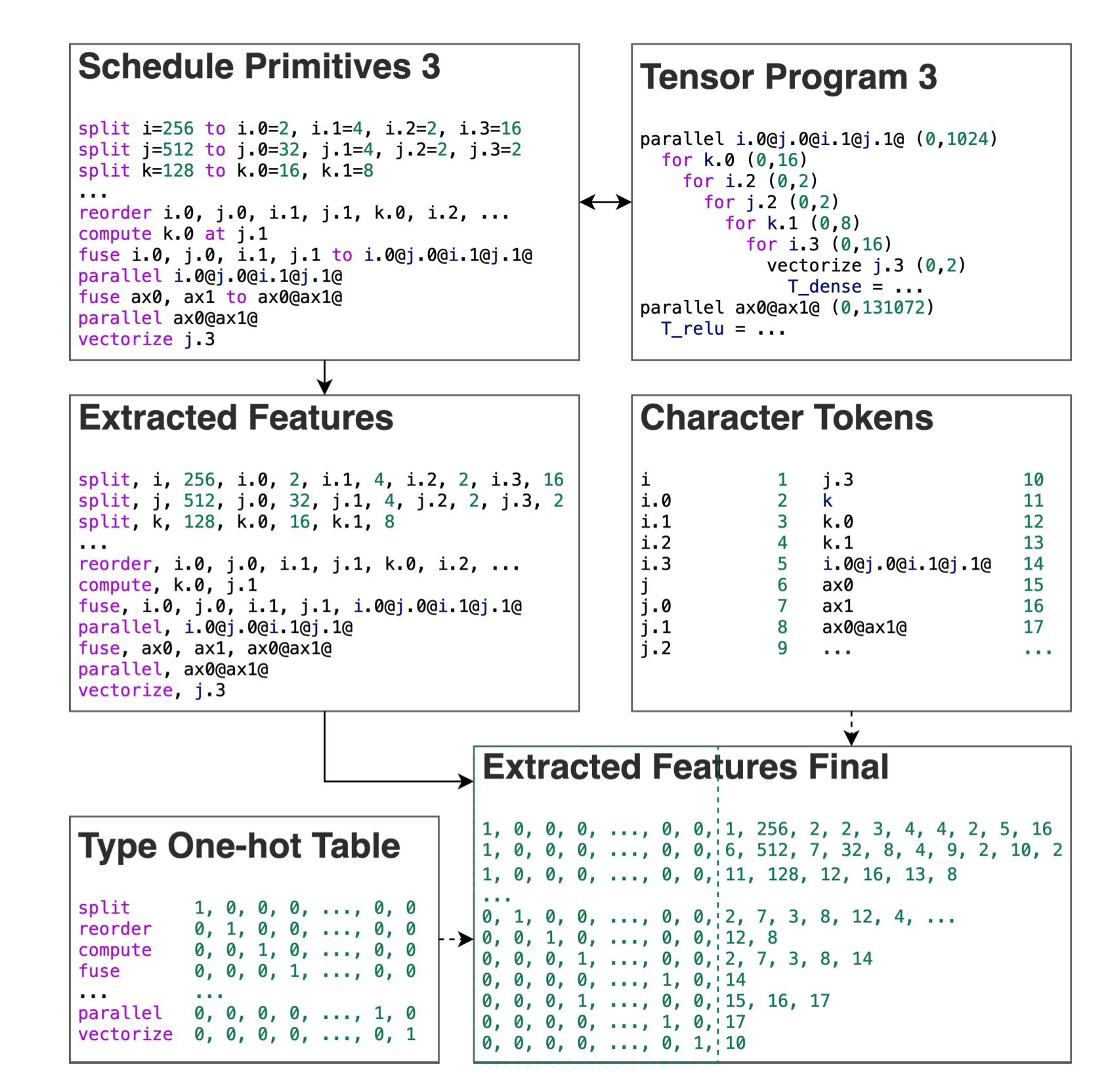基于DL的CostModel
调研一些使用机器学习/深度学习方法构造神经网络CostModel的论文.
TLP: A Deep Learning-based Cost Model for Tensor Program Tuning
他这里是把对源代码的schedule的类型进行onehot, 然后名字参数进行 tokenize, 数值参数不改变.
\[ \begin{aligned} F = F_{1} (\tau) (F_{2} (id) |F_{3} (num)) \\ F_1 : \text{PrimitiveType} \rightarrow \text{OnehotVector} \\ F_2 : \text{NameParam} \rightarrow \text{Token} \\ F_3 : \text{Number} \rightarrow \text{Number} \\ \text{PrimitiveType} \in { \text{split}, \text{reorder}, \text{fuse} } \\ \text{NameParam} := \text{id} \end{aligned} \]
特征提取的流程图如下:

他的模型基本上是基于transformer,
讲数据加载进来之后分为input[:setp_size,:feat_size],
这里setp_size,feat_size分别为25,22. 应该说默认一共调度25次,
以及每个调度的参数长22.
Efficient Automatic Scheduling of Imaging and Vision Pipelines for the GPU
这个是通过分析原始调度中的一系列特征值进行分类.
将pipeline_features, schedule_features送到两个输入头中,
然后分别进行全连接之后再concat之后继续全连接.